10 plants to avoid around a pool – for safe, tranquil backyard bathing
Keep these plants away from your pool for fuss free outdoor swimming
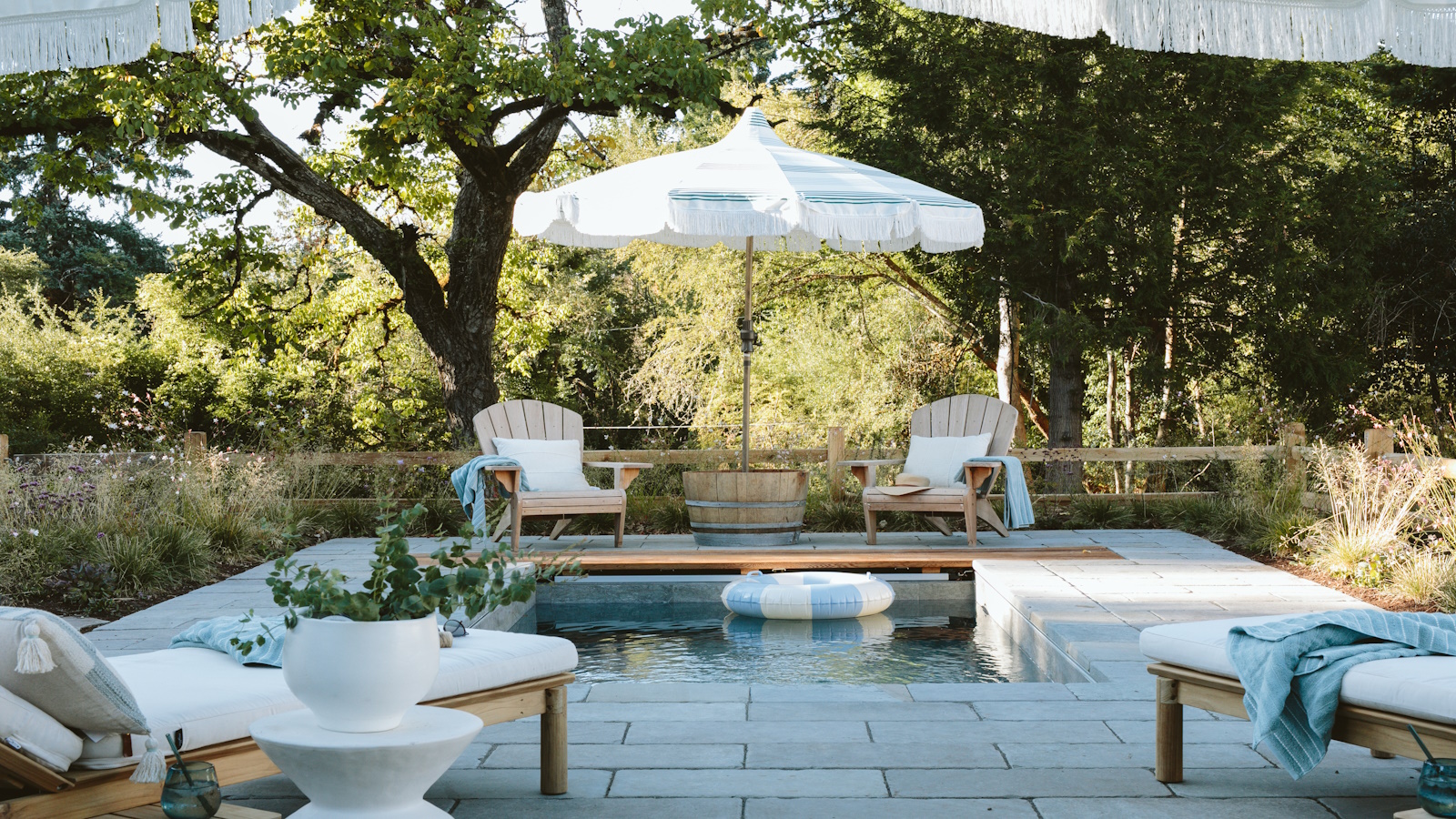

Knowing which plants to avoid having around your outdoor pool can make a big difference to your enjoyment and pool landscaping ideas. Relaxing poolside against a cool, shady backdrop of lush leaves and fragrant blooms is hugely appealing, but some plants can lead to problems.
Alicia Toedter, Education and Content Leader at pool care brand Leslie’s, explains: ’Debris-heavy plants increase time spent skimming and vacuuming the pool, cleaning out the pump strainer and skimmer baskets, as well as testing, balancing, and sanitizing the water to address the extra contamination. Trees with deep or wandering root systems can also be problematic for inground pool walls and plumbing, with invasive roots causing costly damages,’ says Alicia.
If you are planning a new pool, hot tub or plunge pool, or looking to revamp the planting around your existing poolside, we’ve got the expert insight you need for the plants to avoid.
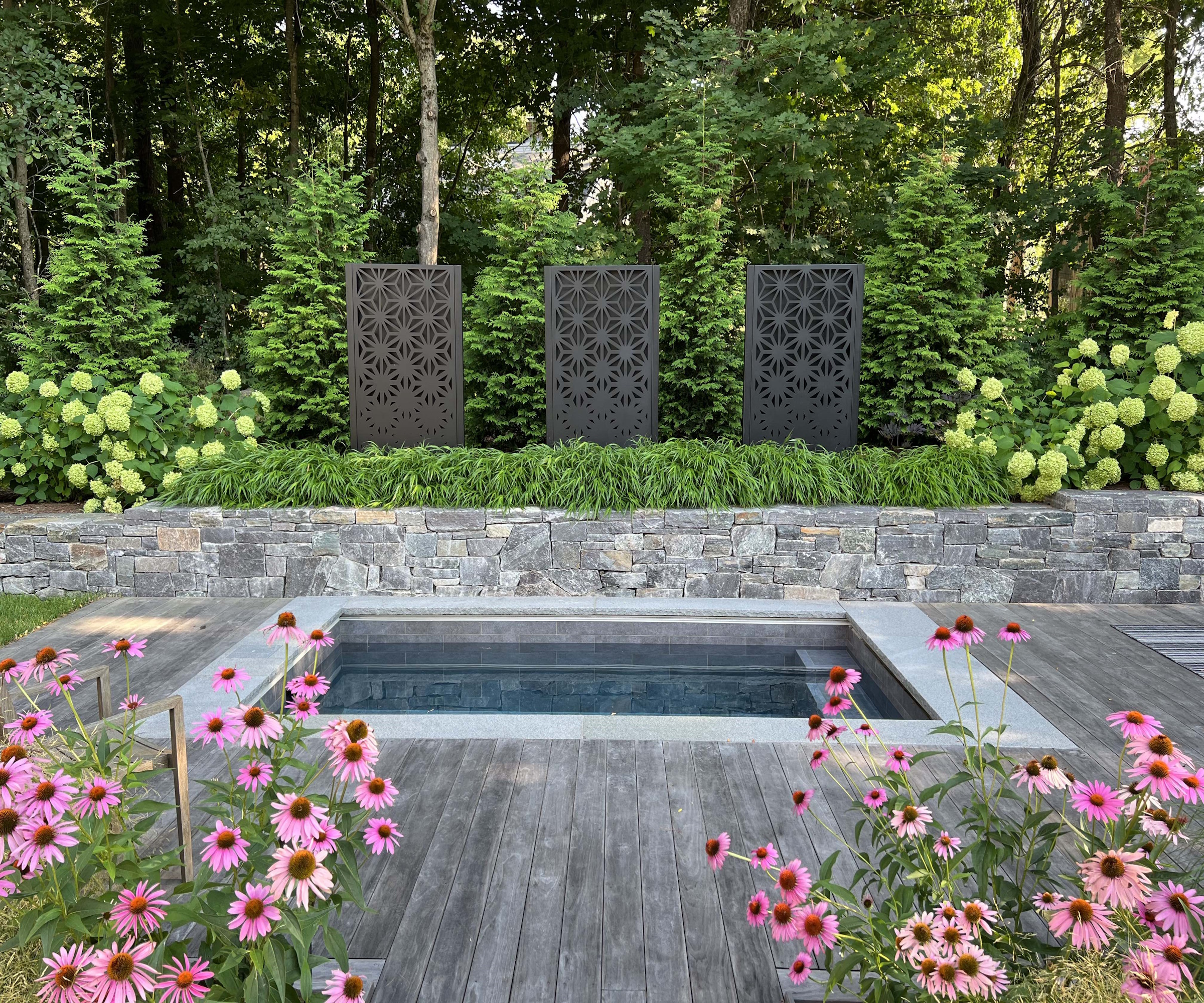
Plants to avoid around a pool
There are many stunning contenders – valued for their blooms, foliage and architectural framework – that can enhance a poolside setting. However, there are also several different plants and trees to think twice about if you want to minimize the cleaning and ensure a safe bathing space.
1. Lavender
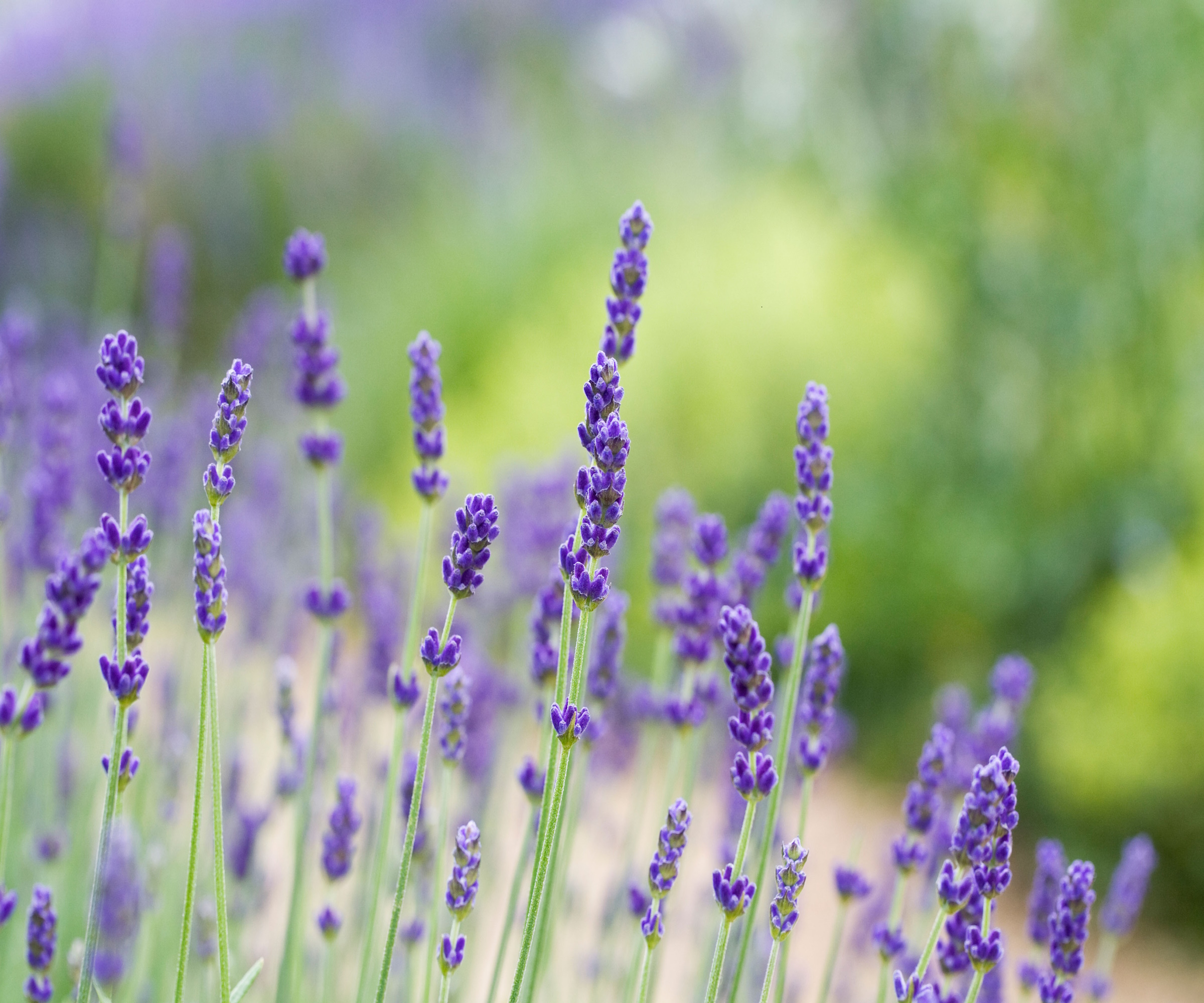
Gorgeous and with a heavenly scent, you may think lavender is the perfect choice for planting near a pool, but think carefully before plumping for that hazy purple hedge.
‘If you’re afraid of bees, you may want to avoid lavender in pots, planters, or garden beds around your pool as these pollinators love this plant’s fragrant flowers,’ says horticulturist, Justin Hancock.
Many designers and pool experts agree, including Karen Larson, co-founder of Soake Pools. ‘Plants such as lavender or sunflowers lure insects, which distract from the relaxation of being at your pool. Instead, plant flowers in a garden a bit further away from your pool area.’
Design expertise in your inbox – from inspiring decorating ideas and beautiful celebrity homes to practical gardening advice and shopping round-ups.

Justin Hancock, is a Costa Farms horticulturist with more than 25 years in the industry. A plant enthusiast and educator, he has a degree in horticultural science and has worked in garden centers and botanical gardens, as a garden designer, and in garden publishing. He has experiencing gardening across the country, from Minnesota to Miami to Oregon. Hancock is also co-host of the Costa Farms podcast Plant Rx.

Alicia is the Education and Content Leader at Leslie’s, the leading pool and spa care brand in the U.S. Over the past five years, Alicia has dedicated herself to pool-care education, and she has a passion for creating engaging written and video content to help homeowners learn more about safely enjoying their pools.
2. Fruit trees
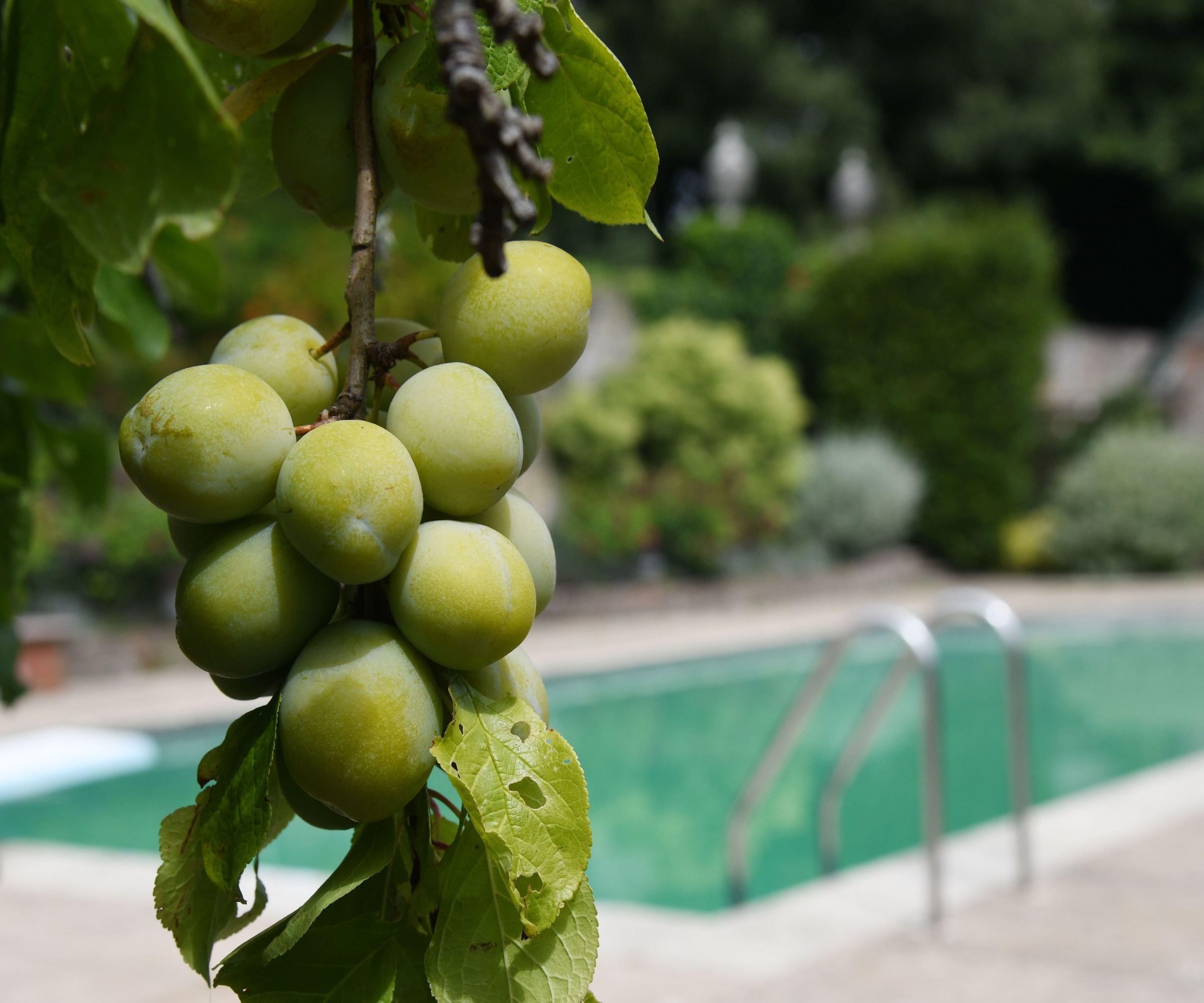
Many dreams are made of lazing in the pool, casually plucking fresh, juicy fruit from an overhanging branch, but the reality is somewhat different.
‘Although it's best to surround your pool with plants that thrive locally, when possible, avoid having fruit-bearing trees too close to the pool area. Plants with berries or pods can stain covers and coping, and the fruit or seeds will fall into the pool frequently,’ says Karen Larson.
Another issue is that the ripe and fallen fruit can attract unwanted visitors, as Alicia Toedter explains: 'Fruit-bearing trees like apple, pear, peach, and cherry shed leaves, pollen, flowers, and fruit at various times throughout the year, plus they attract bees, rodents, and other pests to the pool area.'
3. Egyptian Star
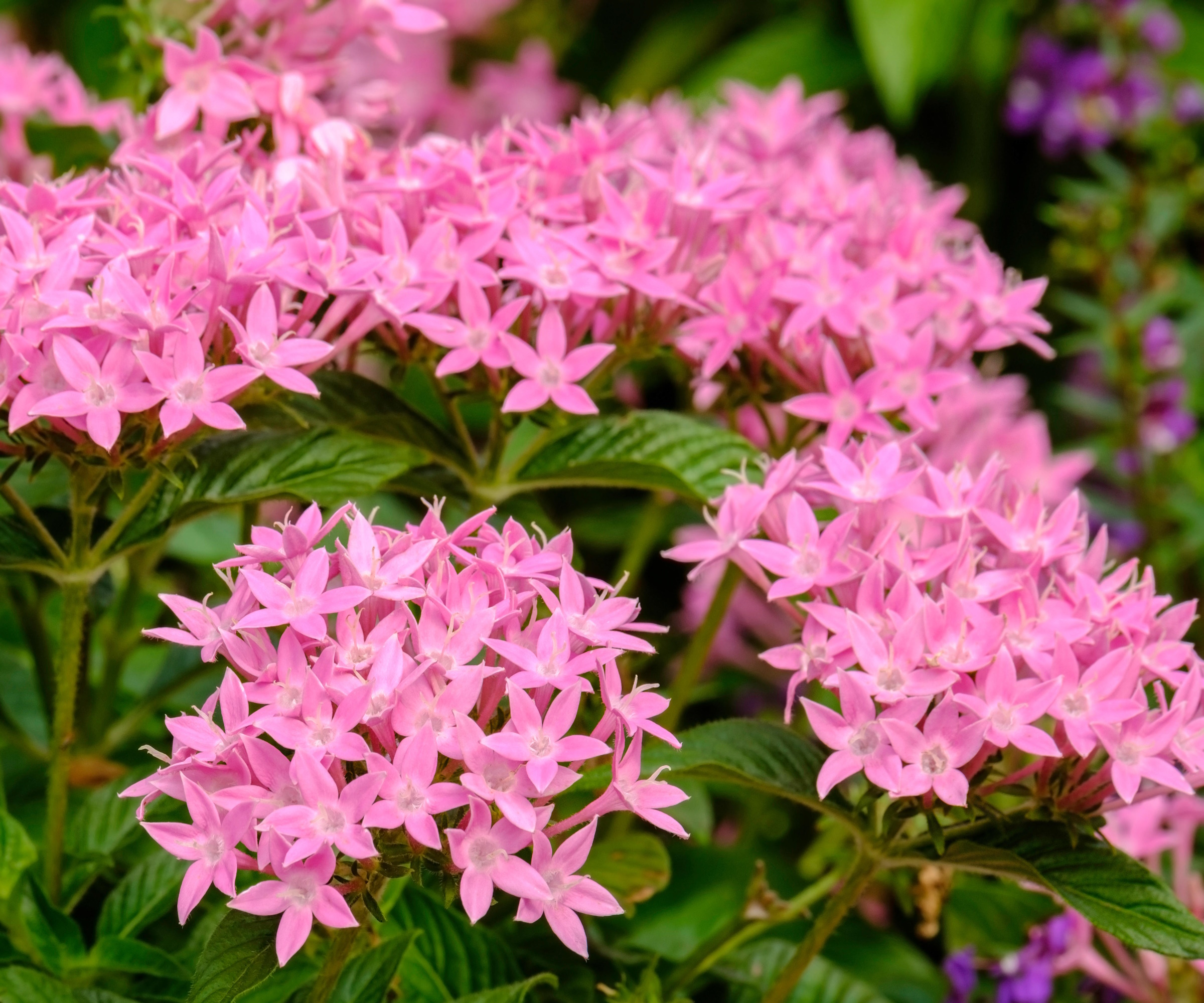
Set your sights on the Egyptian star plant and chances are you will be smitten, but many experts know to avoid planting it near a pool.
‘Pentas lanceloata or Egyptian star is a fabulous garden plant that blooms profusely, attracts pollinators, and resists heat and drought well,’ says horticulturalist Justin Hancock.
‘It’s great for growing in containers around your pool, but I’d avoid planting it in landscaped beds right around your pool if there’s a chance pool water can overflow - such as after heavy rain. Too many chemicals in the soil can defoliate or even kill an established Pentas plant - as I have unfortunately discovered.’
4. Bamboo
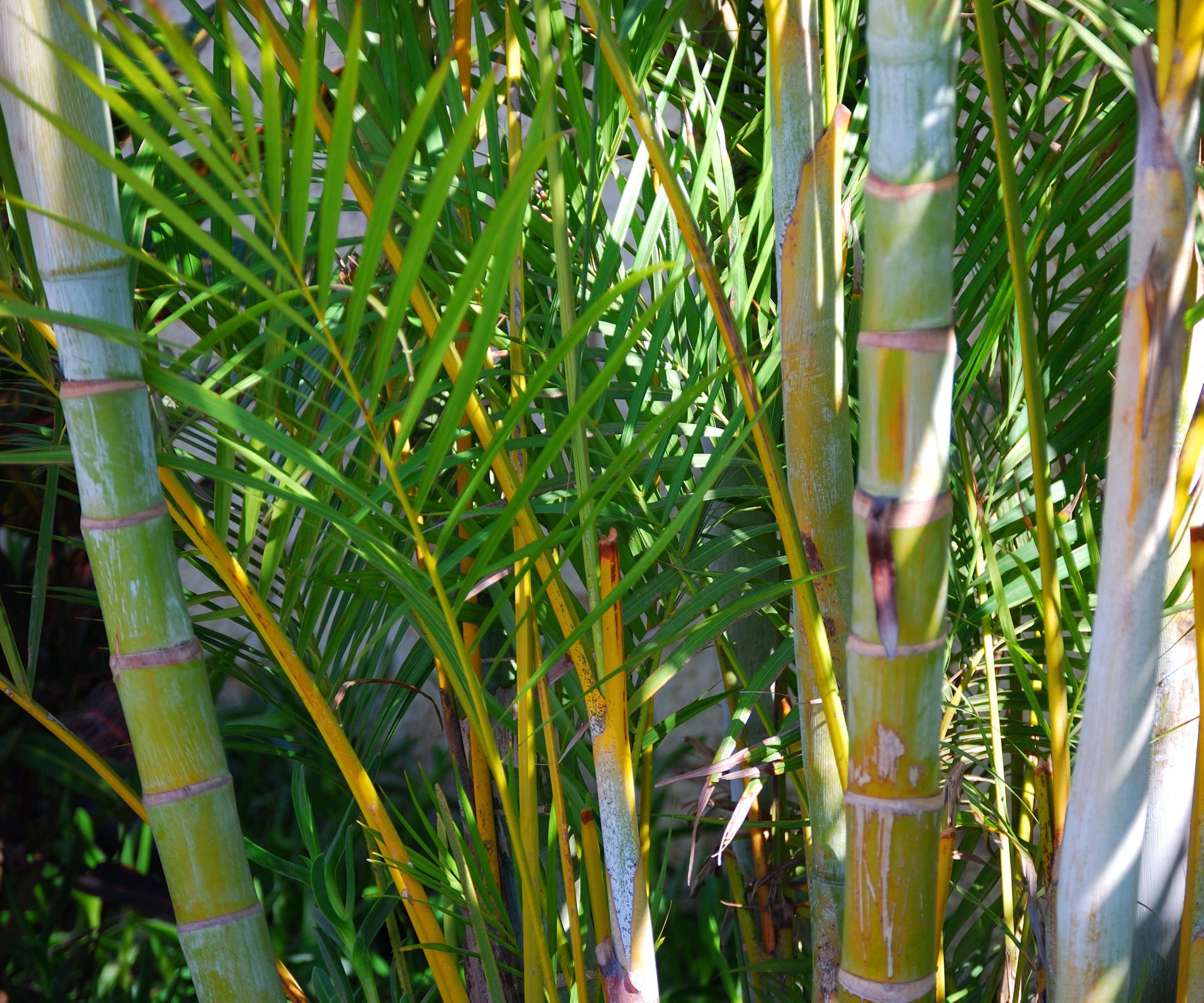
It may be stating the obvious, but despite offering privacy, serenity and shade around a pool edge – not to mention the soothing rustle of a breeze in the leaves – many bamboo varieties are aggressive and should be planted near a pool with extreme caution.
With vigorous growth and fast spreading roots, many bamboo plants can quickly take over, breaking through barriers – such as fencing, retaining walls, paving, pipework and pool liners, no matter how professionally installed the project. There’s also the small and tiresome issue of falling leaves to contend with – clogging filters and littering the water’s surface.
Clump forming species such as Bambusa vulgaris ‘Vittata’ and Fargesia nitida ‘Great Wall’ are the safest options, but for total peace of mind grow them in a large planter well back from the water’s edge.
5. Cacti
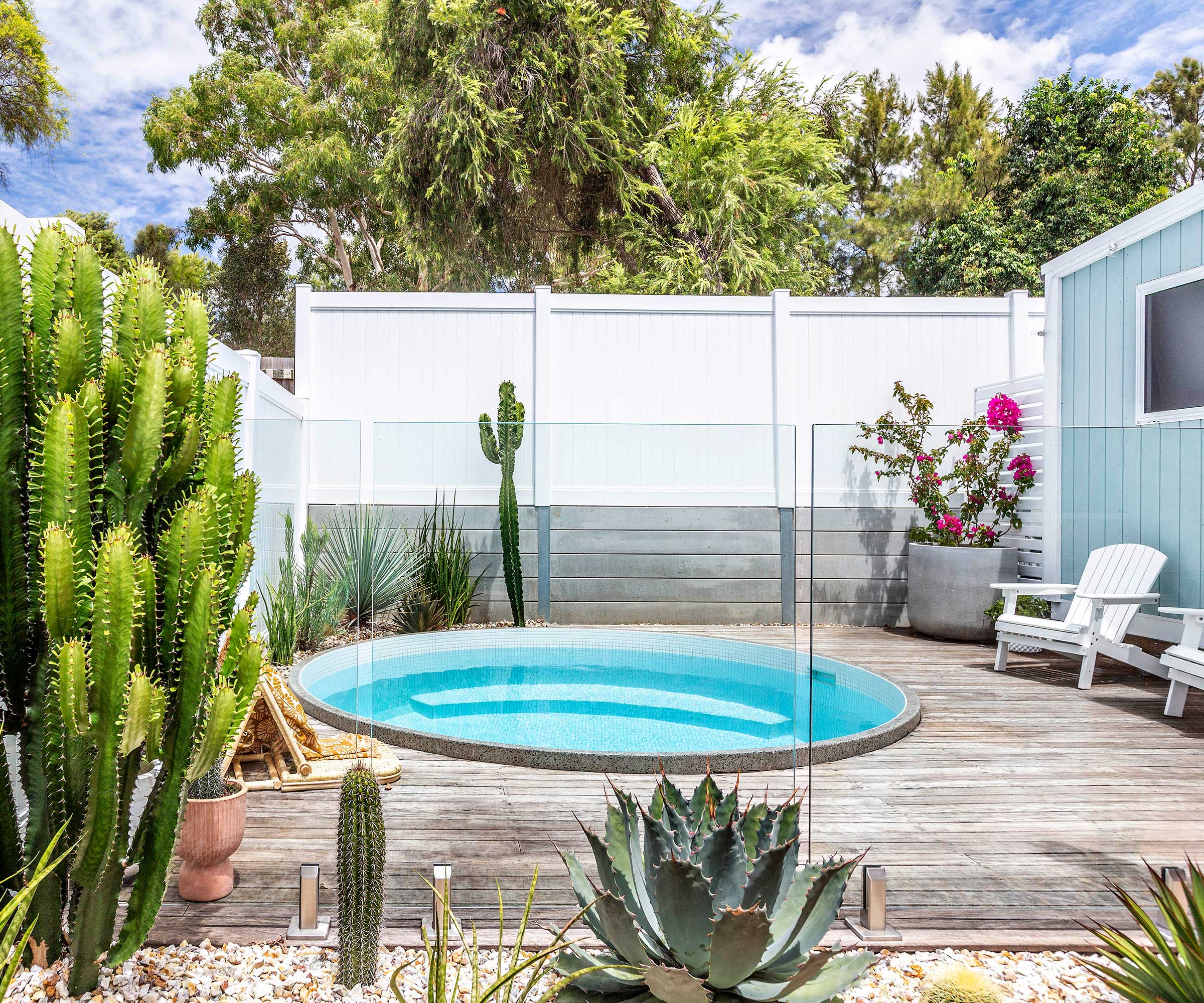
They look amazing set against the azure blue of a pool, but having large cacti next to a pool is not a good idea, for obvious reasons, especially if children use the area.
‘While sun-loving, drought-tolerant cacti are super easy to care for in containers, having them in pots or planters right near your pool can be a mistake because of their spines and thorns,’ continues Justin Hancock. ‘Pool decks can get slippery when wet so you don’t want to create an environment where you could slip, fall, and land on a spiny cactus plant.’

Karen’s background is in textiles and design. She enjoyed working in the interior design field and even owned a chocolate shop at one time. After raising two children, she co-founded Soake Pools with Brian Larson and gets excited by the challenge and variety in each day. She loves to run, swim, and play her guitar in her spare time!
6. Bougainvillea
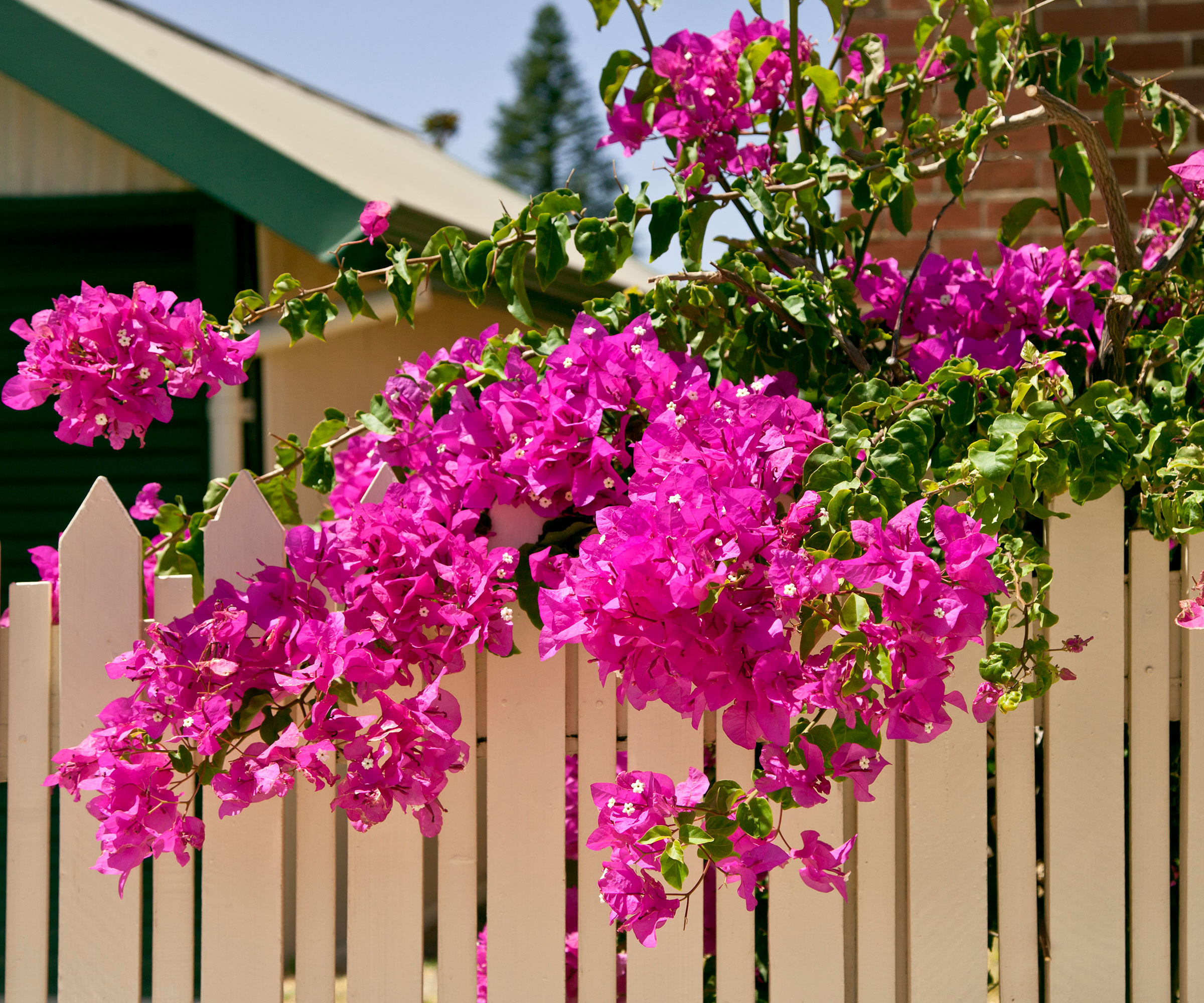
Native to South America and the Mediterranean, these large, woody climbers are instantly recognized for their dazzling cerise bracts. Thriving in warm, dry climes where the temperature remains steadily above 50F they are a head turning spectacle when in full color.
Lesser-known cultivars are no less dramatic, with bracts in showy golden yellow, orange and white and you may be tempted to grow one poolside but be warned.
‘While those delicate, papery bracts might be appealing visually, they tend to end up in the pool, leading to filter blockages and a messy situation,’ says landscape designer Jonathan Ames.
Many bougainvillea varieties also have spiny thorns on the arcing area stems, which can prove an issue if overhanging the water or too near the pool surrounds. Instead, reserve them for pots and planters, well away from the area. In fact, these plants thrive with constrained roots and will often produce more blooms if contained
7. Honeysuckle
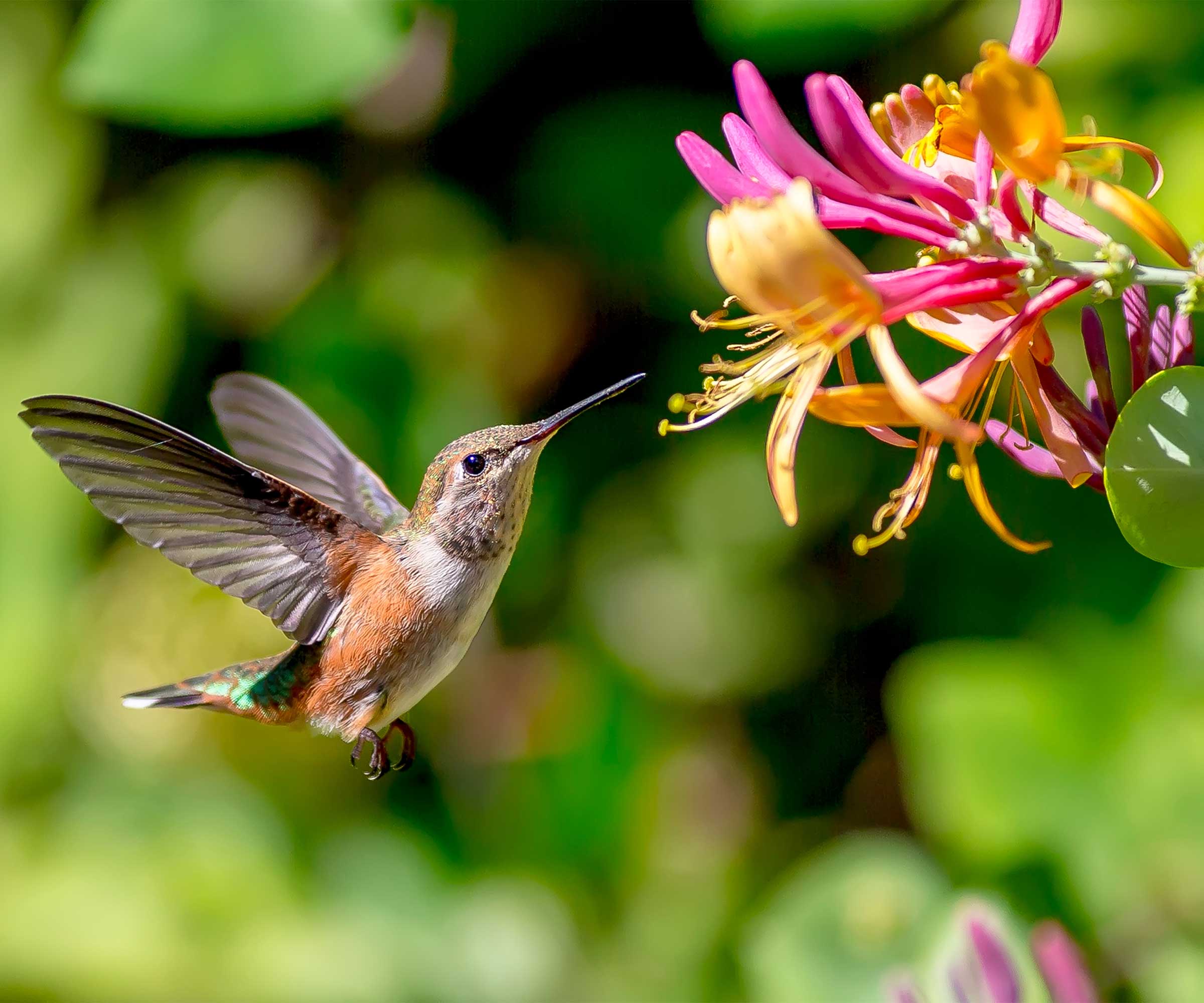
Fantastic for training over pergolas, scrambling through trees and twining through trellis, these sun loving plants are also surefire winners with their brilliant color combinations and exotic shaped blooms. However, while they impress with their vigorous habit and delight with their heavenly fragrance, Lonicera are also hugely popular with pollinators, which can prove problematic near a pool.
Jonathan explains, ‘The sweet aroma of honeysuckle is irresistible to bees, which can be bothersome when you're just trying to relax by the pool.’ These plants also attract spider mites and aphids which can annoyingly end up on the pool edge or water’s surface if the vine’s branches overhang.
Several varieties of honeysuckle are also considered invasive in eastern States and should be avoided altogether. These include morrow’s honeysuckle, tartarian honeysuckle and Japanese honeysuckle.
8. Mint
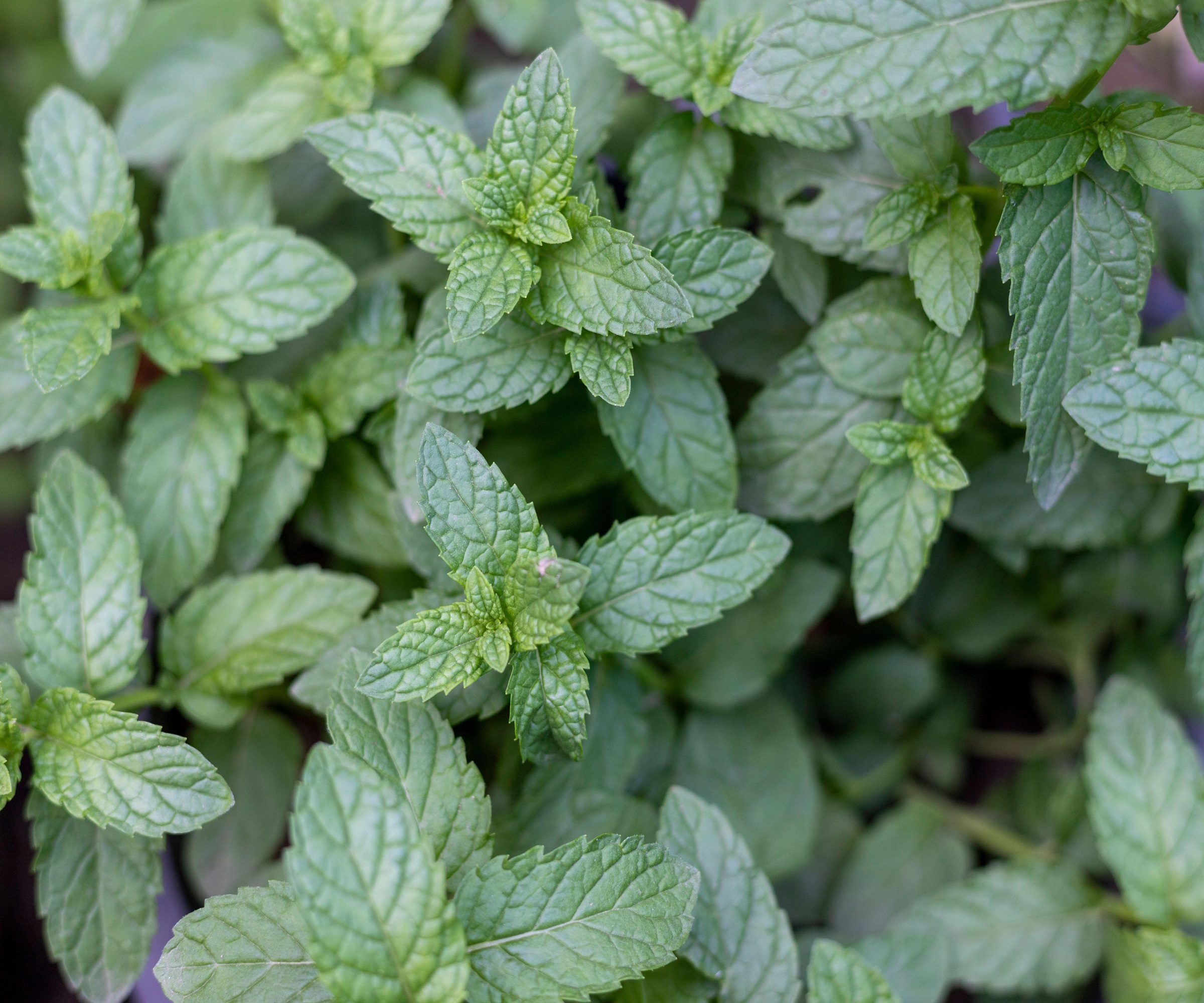
While mint is invaluable in the herb garden, it is definitely best avoided planted near a pool or hot tub. With its deep, crinkly leaves and delicious, invigorating scent you may think its aromatic charms could bring a spa-like feel to your swim sessions, but sadly its rampant roots make it off limits.
With vigorous, sideways growing roots - often reaching in excess of 3ft long - this plant can easily take over a border, spread below paving and generally become a nuisance. Even the slightest fragment of root can break off to form a new plant, which can make it hugely tricky to eradicate.
A herbaceous perennial, mint also has the ability to deprive neighbouring plants of essential nutrients, leaving many to become weak and sickly, hardly the lush and leafy look most of us want beside a pool. Add to this its popularity with pollinators and you will soon be regretting planting it in this area. Instead consign it to pots and planters nearer the house or kitchen door.

With over 20 years in the industry, Jonathan is a landscape designer at BACQYARD, combining his deep-rooted passion for plants with extensive experience across the country. His expertise ranges from nurturing houseplants to crafting expansive landscapes.
9. Bird of Paradise

With its unique orange and yellow blooms set against glossy, deep green leaves, this plant radiates tropical climes. Originating from South Africa and so named due to the flower’s resemblance to the jungle birds, it is often a go-to choice for poolside planting. Creating plenty of shade and privacy it may appear to be a smart choice, however, Strelitzia can cause pool related problems.
‘Although these exotic gems are stunning, their large, tough seeds tend to fall into the pool, posing a safety risk for swimmers,’ cautions Jonathan Ames. Another issue are the extensive and surprisingly strong roots. Relatively fast growing, they can actually rupture pipework, lift coping and distort pool liners, causing expensive and hard to repair damage.
A much safer option is to grow these 3.5-6ft tall plants in supersized containers, where they can be closely monitored and divided if needed.
10. Mesquite
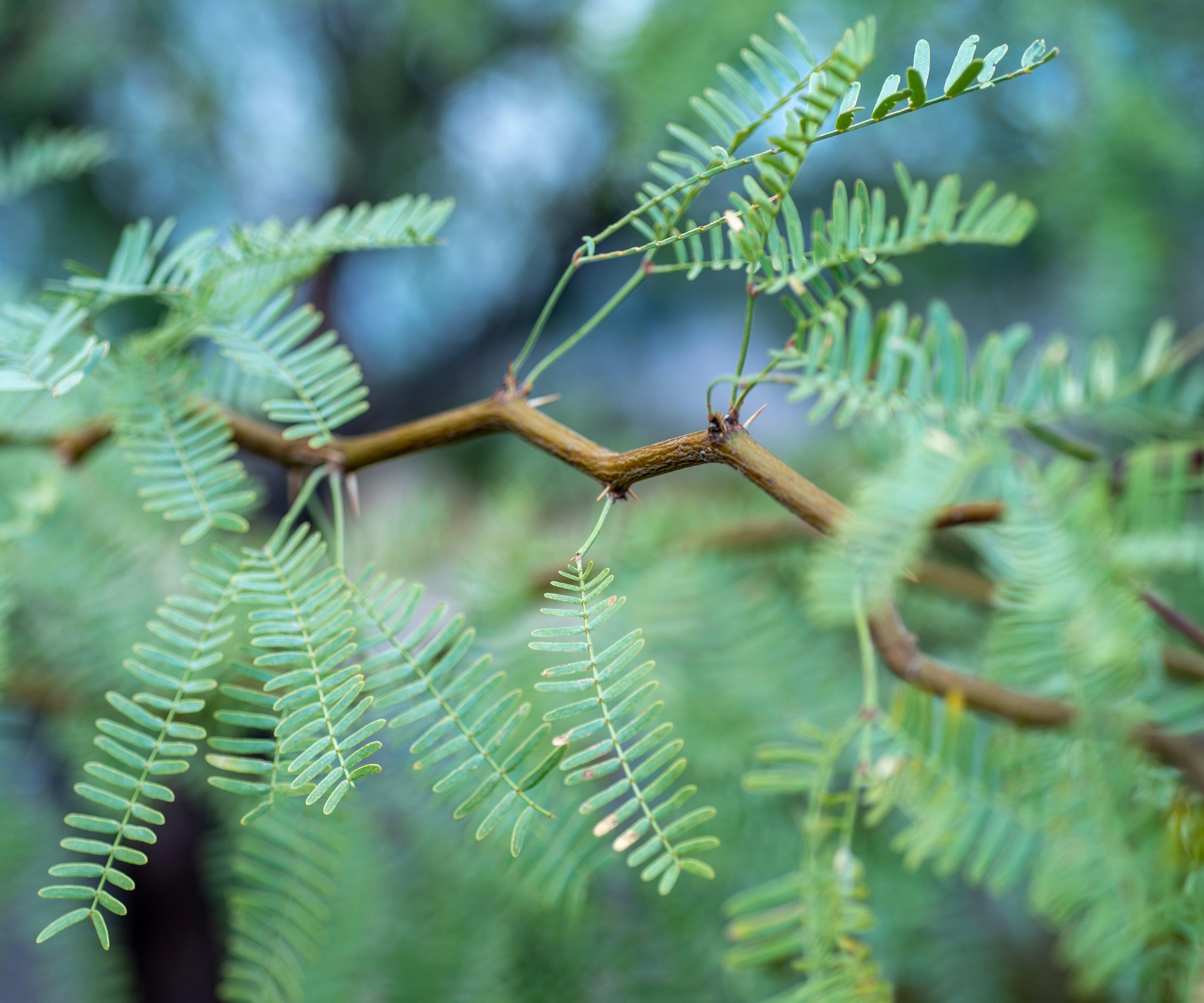
Drought tolerant, happy in poor soil, good for wildlife and attractive too, the mesquite tree is a fabulous choice for any warm climate garden, so you could think it’s the perfect poolside choice? Actually, there are a few reasons to consider carefully before growing this tree too near a pool.
While the craggy bark and finely cut leaves are hugely attractive, the robust, water seeking roots can prove invasive, damaging pool liners and lifting surrounding paving.
The fragrant catkins and honey sweet seed pods are popular with wildlife and will attract them to the pool area, which can prove annoying for swimmers and sun worshippers alike. There’s also the matter of the thorny stems to contend with, the last thing you want to brush against before entering or exiting the pool.
FAQs
Can I have trees growing near my pool?
Yes but think carefully about the position of any existing trees when starting a new pool project or if designing poolside landscaping from scratch.
'Some low-debris trees are well suited for the pool area, such as the flowering dogwood or thuja, says Alicia Toedter, Education and Content Leader at pool care brand Leslie’s. 'Another option is to use palms like the sago palm, a tree that grows slowly, has shallow roots, and produces limited debris. Sago palms look like mini palm trees, throw off a beachy vibe, and can even be potted so you can move them around your pool area.'
Plant new trees at least 20 feet away from the edge of the pool to ensure the roots do not encroach on the pool liner. Also make sure the drip line from any overhanging branches is away from the pool edge.
So now you know exactly which plants to avoid, how can you go about landscaping a pool area and which are the best plants to use? If you are looking for more poolside inspiration there are plenty of outside seating ideas to consider plus ways to create shade.

Journalist Jill Morgan has spent over 20 years writing and editing gardening, interior and property features. Titles she has worked on include The English Home, House Beautiful, Ideal Home, Houzz and Modern Gardens and she writes regularly for H&G as a Contributing Editor. Whilst she is a dab hand at renovation projects and DIY, she is happiest when out digging in the garden or planning a new border.